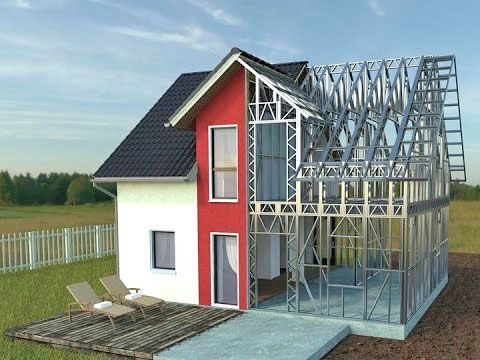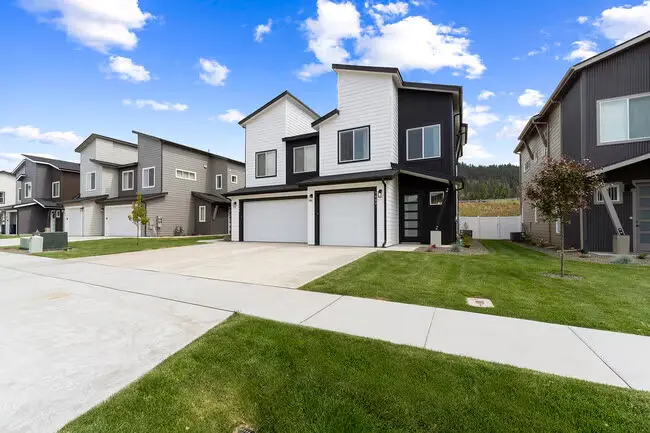LSF lightweight structure in Australia; a smart choice for fast, safe and sustainable construction
Australia is one of the most advanced countries in the world in terms of new construction technologies. In this country, the importance of resource optimization, climate adaptation, and compliance with safety and environmental standards has become an integral part of any construction project. Among these, the Light Steel Frame (LSF) system is recognized as one of the most efficient and intelligent construction methods in Australia.
What is LSF and why is it popular in Australia?
Light Steel Structure (LSF) is a modern system of galvanized steel frames that are manufactured in a factory and assembled on site in a dry (without mortar) manner. This method was developed in Australia a long time ago and is currently widely used in many residential, commercial and infrastructure projects in this country.
Reasons for the popularity of lightweight structures in Australia:
- Compatibility with diverse climatic conditions: from hot and dry areas such as Western Australia to wet and stormy areas of Queensland.
- High resistance to fire, termites and decay.
- Meeting the strict construction regulations and safety standards in Australia.
- High speed of implementation in urban areas and remote projects.
Key Benefits of LSF in the Australian Construction Market
Key Benefits of LSF in the Australian Construction Market
1. High Construction Speed; A Solution to the Housing Shortage Challenge
A serious challenge in some Australian states such as New South Wales and Victoria is the increasing demand for housing and the time-consuming nature of traditional construction methods. LSF reduces construction time by up to 50% by being prefabricate in the factory and quickly assembled on site. This feature helps in the rapid development of mass housing projects, rural homes, or construction in crisis areas such as areas affected by bushfires.
2. Resistance to Fire and Natural Disasters
Australia regularly faces hazards such as widespread fires, mild earthquakes, and severe storms. LSF structures are highly fire-resistant due to the lack of combustible materials and, unlike wood, do not burn or rot. They also have much better seismic performance than traditional structures due to their light weight.
3. Termite and pest resistant
In many parts of Australia, especially tropical areas such as North Queensland, termites are one of the most significant threats to wooden structures. The use of galvanized profiles in LSF makes it completely resistant to pests and decay; an advantage that saves on long-term maintenance costs.
4. Compatibility with sustainable construction principles and the environment
Given Australia’s focus on sustainable development goals and reducing the environmental impact of buildings, the use of LSF is fully aligned with the country’s green and ecological approaches due to its significant reduction in waste, noise pollution and construction debris. The steel profiles used are recyclable and the implementation of the LSF system does not require extensive use of concrete or mortar.
5. Suitable for large urban and infrastructure projects
From social housing projects in underserved areas to the construction of mobile schools, prefabricated clinics and temporary educational spaces in remote areas, the LSF system has become the first choice of many construction companies and developers in Australia.
In cities such as Sydney, Melbourne, Adelaide and Perth, many new urban projects are being implemented using LSF technology.

LSF applications in Australian construction
- Modern residential buildings
Two to three storey buildings, modern villas, beach houses or villas in tourist areas. - Light commercial projects
Prefabricated offices, temporary medical centres, exhibition stands and retail spaces. - Public and educational infrastructure
Modular schools, student dormitories, work camps and temporary structures in mining or agricultural areas.
Standards and regulations in Australia for LSF structures
Australia has one of the most stringent building control systems in the world. The implementation of light steel structures must be carried out in strict compliance with the AS/NZS 4600 standard for cold-rolled steel structures. All projects must also be registered in government systems and designed and approved by registered engineers.
The Future of LSF in the Australian Construction Industry
With the Australian Government’s policies to promote sustainable construction, increase urban density, and renovate dilapidated structures, the use of LSF is expected to grow significantly in the coming years. Large construction companies, modern architects, and even the public sector are looking at this technology as a cost-effective, fast, and safe solution.
In projects such as the HomeBuilder Scheme or fire-damaged area reconstruction schemes, the use of lightweight steel structures is being implemented on a large scale.




